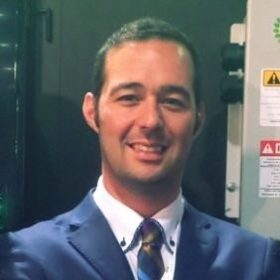In regions where it’s too windy, stow is the most stable position the modules can assume. However, this is done at a much lower wind than the project design wind speed. In this pv magazine Webinar, tracker manufacturer Arctech will show us how increasing the wind speed threshold, allows for increased tracking time, as well as improved stowing parameters, which minimize energy losses when the tracker is in stow, helping increase the overall energy yield of a tracker project.
Optimized Stow-strategy for higher yields in single-axis tracking
It is easy to think that in a windy location developers would deploy single-axis tracker with the highest design wind-speed on the market. Improving how a single-axis tracker handles medium-strong wind, should not be neglected, however, as it can have profound economic effects on a project. For many potential project locations, it would be more important how the tracker reacts at 40 km/h wind gusts, rather than knowing it can withstand 180 km/h wind gusts.
Though trackers can improve the economics of large-scale ground-mount PV arrays, not every location is suitable for their deployment. In the past, there has been a rule of thumb that on the northern hemisphere trackers improve project economics up to a latitude of 40°. With the introduction of bifacial modules, improved component costs and lower PPA pricing, the industry has managed to push that boundary further north and there are tracker projects as far as 55°.
But there are still regions where tracker deployments are challenging. Not because they are too far north, but because it’s too windy. When the wind gusts are blowing, the monitoring system will send the tracker into stow mode to prevent dynamic effects that could result in catastrophic failure. Stow is the most stable position the modules can assume to withstand the highest wind loads.
However, trackers assume this stow position at a much lower wind than the project design wind speed. The wind speed before triggering stow is called “operational wind speed”, and this means that below this threshold the tracker is collecting maximum irradiation.
Increasing this operational wind speed minimizes the number of times the tracker is not facing the sun, making for higher energy generation.
In this pv magazine Webinar, tracker manufacturer Arctech will show us how increasing the wind speed threshold, allows for increased tracking time. Arctech’s Director, Global Engineering and R&D, Pedro Magalhães, will also show us improved stowing parameters, which minimize energy losses when the tracker is in stow, helping increase the overall energy yield of a tracker project.
pv magazine Webinar content:
- Single-axis tracker and wind resilience measure
- Tracker economics
- Stow position
- Improved economics due to less downtime
- Q&A
Questions can be submitted beforehand or during the webinar through a chat window. Marian Willuhn from pv magazine will be the moderator of this webinar.
Registration for this pv magazine Webinar is free of charge.

